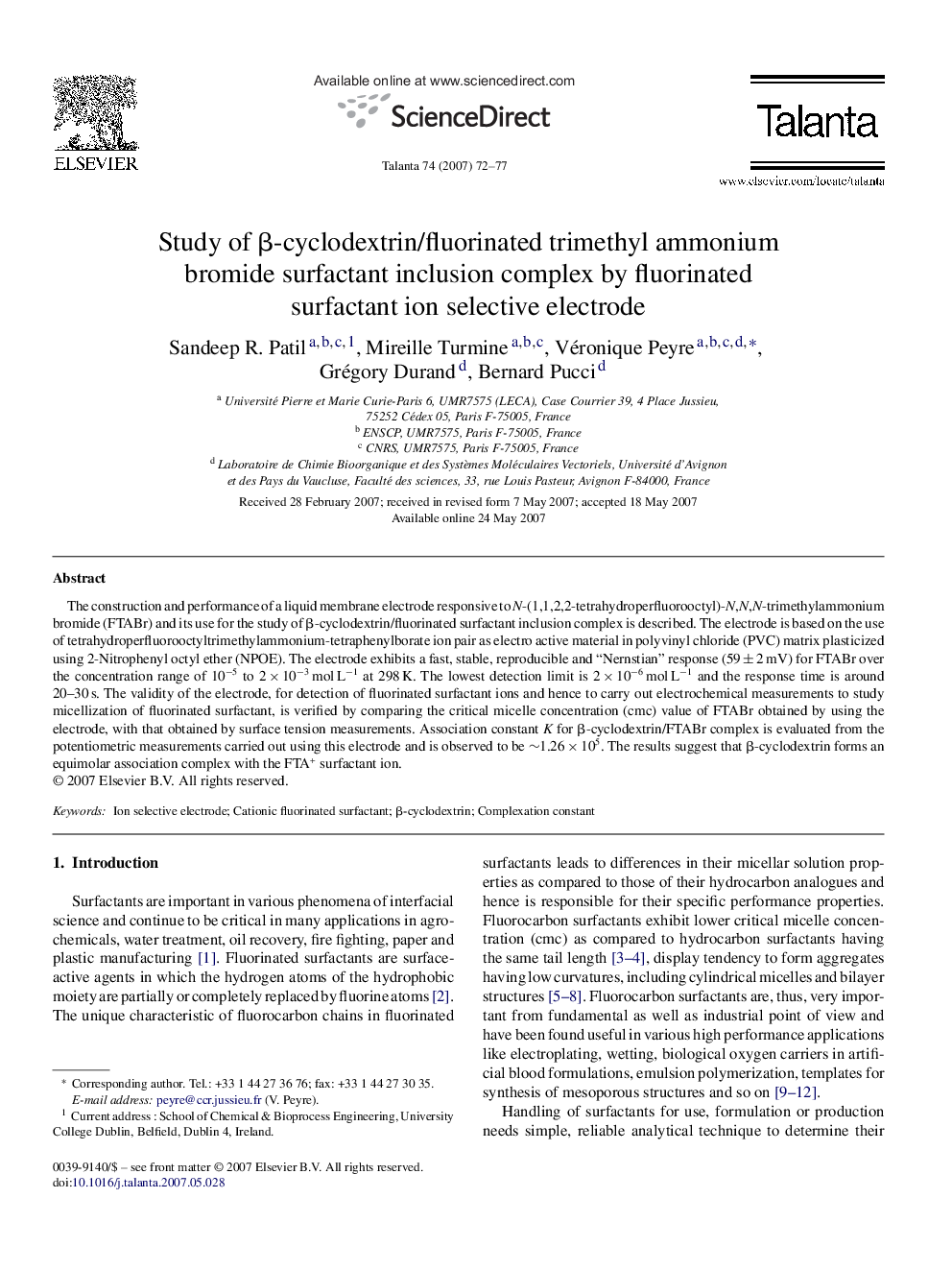| Article ID | Journal | Published Year | Pages | File Type |
|---|---|---|---|---|
| 1245817 | Talanta | 2007 | 6 Pages |
Abstract
The construction and performance of a liquid membrane electrode responsive to N-(1,1,2,2-tetrahydroperfluorooctyl)-N,N,N-trimethylammonium bromide (FTABr) and its use for the study of β-cyclodextrin/fluorinated surfactant inclusion complex is described. The electrode is based on the use of tetrahydroperfluorooctyltrimethylammonium-tetraphenylborate ion pair as electro active material in polyvinyl chloride (PVC) matrix plasticized using 2-Nitrophenyl octyl ether (NPOE). The electrode exhibits a fast, stable, reproducible and “Nernstian” response (59 ± 2 mV) for FTABr over the concentration range of 10â5 to 2 Ã 10â3 mol Lâ1 at 298 K. The lowest detection limit is 2 Ã 10â6 mol Lâ1 and the response time is around 20-30 s. The validity of the electrode, for detection of fluorinated surfactant ions and hence to carry out electrochemical measurements to study micellization of fluorinated surfactant, is verified by comparing the critical micelle concentration (cmc) value of FTABr obtained by using the electrode, with that obtained by surface tension measurements. Association constant K for β-cyclodextrin/FTABr complex is evaluated from the potentiometric measurements carried out using this electrode and is observed to be â¼1.26 Ã 105. The results suggest that β-cyclodextrin forms an equimolar association complex with the FTA+ surfactant ion.
Related Topics
Physical Sciences and Engineering
Chemistry
Analytical Chemistry
Authors
Sandeep R. Patil, Mireille Turmine, Véronique Peyre, Grégory Durand, Bernard Pucci,
